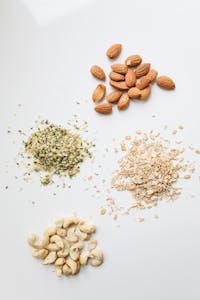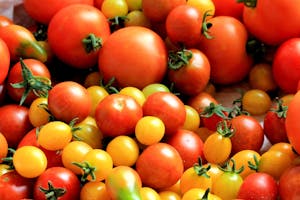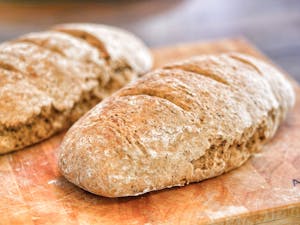Osteoarthritis, a chronic condition characterized by relentless joint pain and stiffness, affects millions worldwide. Recent scientific advancements have unearthed a compelling link between osteoarthritis and inflammation, paving the way for innovative management strategies. Among these, an anti-inflammatory diet stands out as a powerful and natural approach to alleviating symptoms. By carefully selecting foods that quell inflammation, individuals living with osteoarthritis can experience significant relief and improved quality of life. This comprehensive guide delves into the intricate relationship between osteoarthritis and inflammation, highlighting how dietary choices can influence disease progression. Explore the top anti-inflammatory foods that should grace your plate, understand the nutrients that bolster joint health, and discover delectable recipes designed to tantalize your taste buds while easing your symptoms. Moreover, we offer practical tips for incorporating these dietary changes into hectic schedules, identify common dietary culprits that exacerbate inflammation, and share inspiring testimonials from those who have successfully managed their osteoarthritis through diet. Empower yourself with knowledge and take the first step towards a pain-free existence by leveraging the transformative power of an anti-inflammatory diet.
Understanding the Connection Between Osteoarthritis and Inflammation
Exploring the Role of Inflammation in Osteoarthritis
Osteoarthritis (OA), often described as a degenerative joint disease, affects millions worldwide, causing pain, stiffness, and reduced mobility. While the wear-and-tear theory has traditionally dominated discussions around OA, recent research underscores the pivotal role of inflammation in its progression. Chronic inflammation contributes to the deterioration of joint cartilage, which exacerbates pain and discomfort. This inflammation is not merely a symptom but a driving force, setting off a cascade of biochemical reactions that further damage joint tissues.
In the context of osteoarthritis, inflammation reflects the body’s response to joint injury. When cartilage deteriorates, the exposed bone might rub against neighboring structures, prompting the immune system to react. This immune response includes the release of inflammatory mediators, such as cytokines and prostaglandins, which amplify the damage to the joint structure. Recognizing inflammation as a core component of OA not only shifts the understanding of the disease but also opens doors to comprehensive management strategies.
How an Anti-Inflammatory Diet Can Help Manage Osteoarthritis Symptoms
Adopting an anti-inflammatory diet emerges as a natural and effective strategy for managing osteoarthritis. Unlike pharmacological treatments which may come with side effects, dietary modifications offer a sustainable way to reduce inflammation and, consequently, alleviate osteoarthritis symptoms. By integrating foods rich in anti-inflammatory properties, individuals with OA can experience significant improvements in pain, swelling, and joint function.
An anti-inflammatory diet emphasizes the consumption of fruits, vegetables, whole grains, fatty fish, nuts, and seeds, all known for their inflammation-fighting capabilities. These foods are packed with essential nutrients such as omega-3 fatty acids, antioxidants, and phytochemicals that inhibit inflammatory pathways. Furthermore, such a diet helps in maintaining a healthy weight, reducing the excess load on weight-bearing joints, and slowing down the progression of osteoarthritis.
For example, omega-3 fatty acids, abundant in salmon, walnuts, and flaxseeds, are potent anti-inflammatories that reduce the production of inflammatory cytokines. Similarly, antioxidants found in berries, leafy greens, and spices like turmeric help to neutralize oxidative stress and prevent cell damage. By incorporating these foods consistently into meals, individuals can create an internal environment that mitigates inflammation and supports joint health.
Key Research and Statistics Linking Diet and Osteoarthritis
Scientific research increasingly validates the connection between diet and osteoarthritis management, highlighting the profound impact of an anti-inflammatory diet. Numerous studies have demonstrated that dietary patterns rich in anti-inflammatory foods can lead to substantial improvements in OA symptoms.
For instance, a landmark study published in the Journal of Nutrition observed that participants following a Mediterranean diet — renowned for its anti-inflammatory properties — experienced noticeable reductions in knee pain and improved physical function. The study attributed these benefits to the diet’s abundance of anti-inflammatory omega-3s, polyphenols, and antioxidants.
Another compelling body of research published by the Arthritis Foundation found that individuals who consumed high levels of fruits and vegetables had a lower prevalence of osteoarthritis symptoms. The researchers noted that these foods help reduce oxidative stress and inflammation, critical factors in the progression of OA.
Furthermore, a study in the American Journal of Clinical Nutrition explored the effects of dietary supplements like fish oil on osteoarthritis. The findings revealed significant reductions in joint pain and stiffness among participants taking omega-3 supplements, further reinforcing the role of diet in managing OA.
Moreover, data from the Centers for Disease Control and Prevention (CDC) indicate that obesity, a major risk factor for osteoarthritis, can be managed effectively through dietary interventions. By embracing an anti-inflammatory diet, individuals can achieve weight loss and reduce the strain on their joints, thereby preventing the onset or progression of OA.
These key research findings and statistics provide a robust foundation for adopting an anti-inflammatory diet as part of a holistic approach to osteoarthritis management. They underscore the notion that diet is not just a complementary strategy but a cornerstone in combating inflammation and maintaining joint health.
In conclusion, understanding the connection between osteoarthritis and inflammation is essential for crafting effective management strategies. By acknowledging the role of inflammation in OA and leveraging the power of an anti-inflammatory diet, individuals can take proactive steps towards alleviating symptoms and enhancing their quality of life. With mounting scientific evidence supporting this approach, it is clear that dietary modifications hold the potential to transform the landscape of osteoarthritis care.
21-Day Alternative Healing Strategy
Top Anti-Inflammatory Foods to Include in Your Diet
When managing osteoarthritis, incorporating foods with anti-inflammatory properties into your diet can make a significant difference in alleviating symptoms. Here are some of the most effective anti-inflammatory foods and nutrients that can help promote joint health and reduce inflammation.
Fatty Fish

Fatty fish, such as salmon, mackerel, sardines, and trout, are rich in omega-3 fatty acids. These essential fats have been widely studied for their potent anti-inflammatory effects, making them a critical inclusion in an anti-inflammatory diet for osteoarthritis. Omega-3s help reduce joint pain and stiffness by decreasing the production of inflammatory proteins. Aim to consume fatty fish at least twice a week for optimal benefits.
Leafy Greens
Leafy green vegetables like spinach, kale, and Swiss chard are packed with essential nutrients, including vitamins A, C, and K, and antioxidants. These nutrient powerhouses combat inflammation and support overall health. Incorporating leafy greens into your diet can help reduce inflammation and pain associated with osteoarthritis. Try adding them to salads, smoothies, or sautés to reap their benefits.
Nuts and Seeds

Nuts and seeds are excellent sources of healthy fats, protein, and fiber. They also contain alpha-linolenic acid (ALA), a type of omega-3 fatty acid that helps reduce inflammation. Almonds, walnuts, chia seeds, and flaxseeds are particularly beneficial for individuals with osteoarthritis. Enjoy a handful of nuts as a snack or sprinkle seeds on your yogurt or oatmeal.
Berries
Berries, including strawberries, blueberries, raspberries, and blackberries, are rich in antioxidants and phytochemicals. These compounds help combat oxidative stress and inflammation in the body. Consuming berries regularly can contribute to reduced joint pain and improved mobility. Add berries to your breakfast cereals, smoothies, or yogurt for a delicious and nutritious boost.
Olive Oil
Extra virgin olive oil is a cornerstone of the Mediterranean diet and is renowned for its anti-inflammatory properties. It contains oleocanthal, a compound that mimics the effects of non-steroidal anti-inflammatory drugs (NSAIDs). Using olive oil as your primary cooking oil or drizzling it over salads can help reduce inflammation and protect your joints.
Tomatoes

Tomatoes are rich in lycopene, an antioxidant that has been shown to reduce inflammation and protect against chronic diseases. Cooking tomatoes, such as in sauces and soups, enhances their lycopene content. Incorporating tomatoes into your diet can be both delicious and beneficial for managing osteoarthritis symptoms.
Turmeric and Ginger
Both turmeric and ginger are renowned for their powerful anti-inflammatory and pain-relieving properties. Curcumin, the active compound in turmeric, has been extensively studied for its ability to reduce inflammation and improve symptoms of osteoarthritis. Ginger contains gingerols, which similarly have anti-inflammatory effects. Incorporate these spices into your meals, teas, or take them as supplements to help manage osteoarthritis.
Green Tea

Green tea is rich in polyphenols and antioxidants, which help reduce inflammation and protect joint health. Regular consumption of green tea has been linked to lower levels of markers of inflammation in the body. Enjoy a cup of green tea daily to harness its anti-inflammatory benefits.
Garlic and Onions
Garlic and onions are members of the allium family and are known for their immune-boosting and anti-inflammatory properties. They contain diallyl disulfide, a compound that inhibits inflammatory pathways. Including garlic and onions in your meals not only adds flavor but also helps reduce inflammation and improve overall health.
Whole Grains

Whole grains such as quinoa, brown rice, and whole-wheat products are high in fiber, which can help reduce inflammation. Unlike refined grains, whole grains retain their nutrient-rich bran and germ, providing essential vitamins and minerals that support joint health. Opt for whole grains instead of processed grains to help manage osteoarthritis.
Anti-Inflammatory Nutrients
Several key nutrients play a crucial role in combating inflammation and promoting joint health. These include:
- Omega-3 Fatty Acids: Found in fatty fish, nuts, and seeds, omega-3s help reduce inflammation and joint pain.
- Antioxidants: Present in berries, leafy greens, and other colorful fruits and vegetables, antioxidants protect cells from oxidative stress.
- Vitamins A, C, and E: These vitamins, found in a variety of foods such as leafy greens, nuts, and fruits, have anti-inflammatory properties.
- Polyphenols: Abundant in green tea, berries, and other plant-based foods, polyphenols help reduce inflammation.
- Fiber: Found in whole grains, fruits, and vegetables, fiber helps lower inflammation and maintain a healthy weight, reducing stress on joints.
Simple and Delicious Anti-Inflammatory Recipes
Embracing an anti-inflammatory diet doesn’t mean sacrificing flavor. Here are some simple and delicious recipes to help you get started:
Salmon and Quinoa Salad
Ingredients:
- 1 cup cooked quinoa
- 2 cups spinach leaves
- 1 cup cherry tomatoes, halved
- 1 avocado, sliced
- 1 grilled salmon fillet
- 2 tbsp extra virgin olive oil
- 1 tbsp lemon juice
- Salt and pepper to taste
Instructions:
- In a large bowl, combine the quinoa, spinach, cherry tomatoes, and avocado.
- Top with the grilled salmon fillet.
- In a small bowl, whisk together the olive oil, lemon juice, salt, and pepper.
- Drizzle the dressing over the salad and toss gently to combine.
- Enjoy a nutritious and flavorful meal that’s packed with anti-inflammatory ingredients.
Berry Smoothie
Ingredients:
- 1 cup mixed berries (strawberries, blueberries, raspberries)
- 1 banana
- 1 cup spinach
- 1 tbsp chia seeds
- 1 cup unsweetened almond milk
Instructions:
- Combine all ingredients in a blender and blend until smooth.
- Pour into a glass and enjoy a refreshing and anti-inflammatory smoothie.
By incorporating these anti-inflammatory foods and nutrients into your diet, you can take proactive steps towards managing osteoarthritis and promoting overall joint health while savoring delicious meals.
21-Day Alternative Healing Strategy

Practical Tips for Implementing and Sustaining an Anti-Inflammatory Diet
Meal Planning and Preparation Ideas for Busy Lifestyles
Embarking on an anti-inflammatory diet for osteoarthritis is akin to starting a new fitness regimen; it can be daunting, especially for those with hectic schedules. However, with a sprinkle of organization and a dash of creativity, meal planning can become a seamless part of your routine. Start by designating a specific day each week for meal prep. Spend a few hours chopping your favorite anti-inflammatory foods such as vibrant leafy greens, zesty tomatoes, and aromatic herbs.
Batch cooking is your knight in shining armor. Prepare large quantities of an anti-inflammatory-rich stew or soup, and portion them out for the week. Incorporate omega-3-packed fatty fish like salmon or mackerel into your meal preps, which can be baked or grilled with minimal time investment. And don’t forget the humble smoothie—blend a bounty of anti-inflammatory fruits and vegetables into a portable, nutrient-dense elixir that can be enjoyed anytime.
Another practical approach is to keep your pantry stocked with anti-inflammatory staples. Have quinoa, brown rice, olive oil, canned beans, and nuts readily available. This ensures that when life gets hectic, you’ll have the essentials to whip up a quick and healthy meal without succumbing to fast food temptations.
How to Avoid Common Pro-Inflammatory Foods that Worsen Osteoarthritis
Like an unwelcome guest at a party, pro-inflammatory foods can sneak their way into your life, often disguised as something entirely innocent. The first step towards banishing these dietary culprits from your pantry is awareness. Refined sugars, trans fats, and artificial additives are notorious for exacerbating inflammation and need to be shown the door.
Fast food, while convenient, is a minefield of pro-inflammatory agents. The high levels of trans fats and refined carbs it contains spell trouble for your joints. Replace those quick fixes with fruits, vegetables, and whole grains, which naturally combat inflammation. Soft drinks and sugary beverages are another double agent to look out for—swap these for water, herbal teas, or homemade fruit-infused drinks to keep inflammation at bay.
Red meat, while a delicious source of protein, often comes with a heavy burden of saturated fats. Opt for leaner proteins like chicken or plant-based alternatives such as lentils and chickpeas. Dairy products, particularly full-fat versions, can also be inflammatory for some individuals. Experimenting with alternatives like almond or oat milk might provide relief.
It’s also essential to scrutinize food labels vigilantly. Be on the lookout for hidden sugars, artificial sweeteners, and preservatives—all of which can sneakily ignite inflammation.
Real-Life Success Stories and Testimonials from Individuals Managing Osteoarthritis with Diet
Nothing speaks louder than the voices of those who’ve walked the path before us. Real-life success stories offer a reservoir of inspiration for managing osteoarthritis with an anti-inflammatory diet.
Take Jane, a dynamic 55-year-old who was diagnosed with osteoarthritis five years ago. Jane shared:
Initially, I felt overwhelmed and doomed to a life of discomfort. After researching, I decided to overhaul my diet. Trading my morning pastries for a bowl of oats with berries, and switching from soda to green tea made a significant difference. Over time, my joint pain reduced substantially, and I felt more energetic.
Then there’s Tom, an active 60-year-old marathon enthusiast:
Running is my passion, but osteoarthritis began to reel me in. Implementing an anti-inflammatory diet was a game-changer. I focused on fatty fish, leafy greens, and nuts. Now, I manage to race pain-free and maintain a rigorous training schedule.
Emily, a working mom, emphasized the importance of meal prep:
Time is a luxury I don’t have, which is why meal prepping has been my savior. Prepping anti-inflammatory meals every Sunday has not only helped manage my osteoarthritis but also improved my family’s overall wellbeing. We’ve bonded over discovering delicious, healthy recipes.
The stories of these remarkable individuals highlight a common theme: consistency and dedication to an anti-inflammatory diet. The journey isn’t always easy, but the rewards—reduced pain, improved mobility, and enhanced overall health—are well worth the effort.
An anti-inflammatory diet for osteoarthritis isn’t just a temporal diet; it’s a commitment to a healthier, more vibrant life. With practical meal planning, vigilance against pro-inflammatory foods, and inspiration from real-life heroes, you’re well on your way to managing osteoarthritis effectively.
As we reach the conclusion of our exploration into the world of anti-inflammatory diets for managing osteoarthritis, it’s clear that what we feed our bodies plays a crucial role in our overall health, particularly for those grappling with joint pain and stiffness. Understanding the intimate connection between osteoarthritis and inflammation underscores the importance of dietary choices in controlling symptoms and enhancing the quality of life.
The evidence is compelling: an anti-inflammatory diet rich in fatty fish, leafy greens, nuts, and other nutrient-dense foods can alleviate the discomfort associated with osteoarthritis. Research consistently highlights the positive correlation between such dietary practices and reduced inflammation, a ray of hope for those seeking non-pharmacological interventions. The robust data and success stories further cement the idea that real, tangible change can be achieved through mindful eating.
Incorporating these anti-inflammatory foods into your daily routine doesn’t have to be daunting. With practical meal planning and preparation tips, even the busiest of individuals can find ways to make these beneficial changes. Avoiding common pro-inflammatory culprits such as processed foods and sugars becomes simpler when we’ve armed ourselves with knowledge and delicious, easy-to-prepare recipes that support joint health.
The journey toward managing osteoarthritis with an anti-inflammatory diet is as much about education and empowerment as it is about the foods themselves. Real-life testimonials speak volumes, showcasing how dietary adjustments have led to significant improvements and newfound relief for many.
In conclusion, embracing an anti-inflammatory diet offers a promising, holistic approach to managing osteoarthritis. It’s not just a strategy but a commitment to a healthier, more vibrant life. Let’s celebrate the power of smart, informed food choices in our quest for well-being and joint happiness. Remember, every meal is an opportunity to nourish your body and fight inflammation — and with every bite, you’re taking a step toward a pain-free future.

